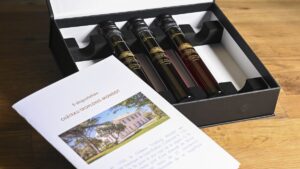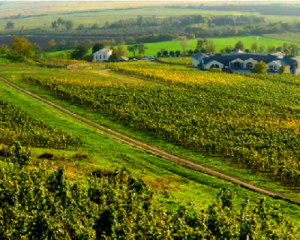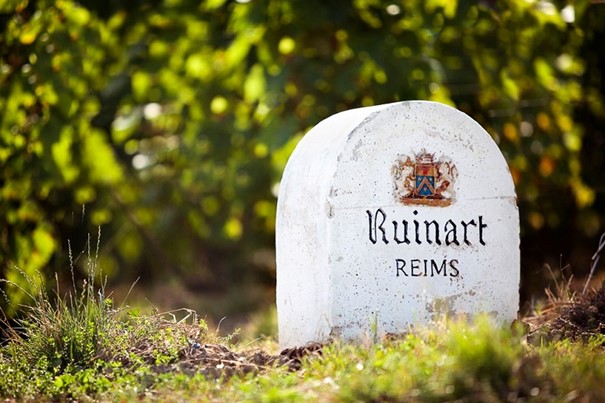
Founded in 1729, Ruinart is globally renowned for the quality of its Chardonnay and the aromatic finesse of its cuvées.
To trace the history of this fine Champagne house is to cover the span of three centuries. We begin in the era of Louis XIV with a certain Dom Thierry Ruinart (1657-1709). This Benedictine monk, originally from the Champagne region, was working at the Abbey of Saint-Germain-des-Prés at the time. Here he got to know something about the mores of society, noting a particular trend for “fizzy wine” that had found favour with young aristocrats. Dom Thierry sensed that this could be the next big thing, so he told his brother and nephew back in Champagne all about it. In 1729 – twenty years after Dom Thierry’s passing – his nephew Nicolas Ruinart founded the eponymous estate, the first champagne house in history. This was also a precursor for the creation of rosé champagne, since the business accounts show that this style of fizz was being produced back in 1764.
Since the mid-18th century, Ruinart has been established in Reims where their magnificent chalk caves serve as cellars. In 1931 these caves were classified by the Minister of education and fine art under the title of ‘Natural sites and monuments with artistic, historic, scientific, or picturesque interest’; they have since become protected as a UNESCO heritage site. This exceptional place is ideal for crafting and ageing champagne over time, and it’s quite an experience to descend 38 metres and 3 floors to see the 8-kilometre long cellars.
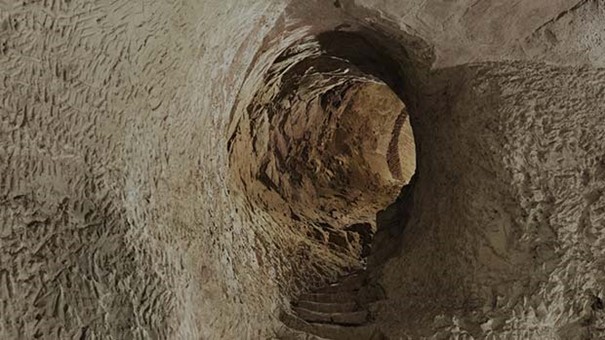
For over two centuries, it was the Ruinart family who saw to the running of their venerable champagne house, and it is now in the more-than-capable hands of the LVMH group. This change has taken nothing away from the house’s independence and original style, though, carefully preserved by the talented head cellarman Frédéric Panaïotis. Ruinart has long had an innovative and collaborative relationship with the art world, commissioning an artist every year to create an exclusive piece for them. This is then displayed on the bottles of their prestige cuvée for that year.
Ruinart’s vine land mainly covers the Montagne de Reims, as well as some very selective vineyards elsewhere.
The Chardonnay grape is the driving force for Ruinart’s cuvées, a varietal that brings to champagne all its aromatic freshness. This estate’s wine is also characterised by a fine minerality, beautiful purity, and a delicate profile. Five different cuvées are produced here. The shape of their bottle is inspired by those used in the 18th century. Over the past 15 years, Ruinart champagne has evolved to have more finesse and harmony, notably with a reduction in its dosage. Overall, these are light and elegant champagnes, perfect to serve as an aperitif.
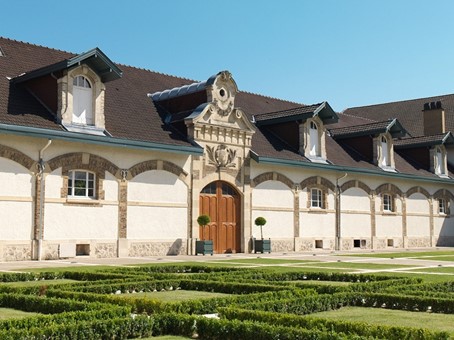
Ruinart’s second skin
In February 2020, Ruinart announced the development of a ‘second skin’ to replace the packaging fro its Ruinart Brut, Ruinart Rosé, Ruinart Blanc de Blancs, and vintage Ruinart cuvées. This 100% paper envelope, recyclable and 9 times lighter, is the result of 2 years of research. Using this packaging instead of the traditional boxes sees a 60% decrease in carbon footprint, thus forming an important step in the estate’s engagement with pressing environmental challenges.
This kind of packaging also serves to protect the cuvée from light damage, especially if the bottle is transparent like the one used for the blanc de blancs. In fact, this cuvée is no longer sold uncovered, such is the risk to the champagne’s taste if exposed to too much light. This ‘second skin’ is also waterproof, so it can be kept on whilst the bottle is in a champagne bucket.


